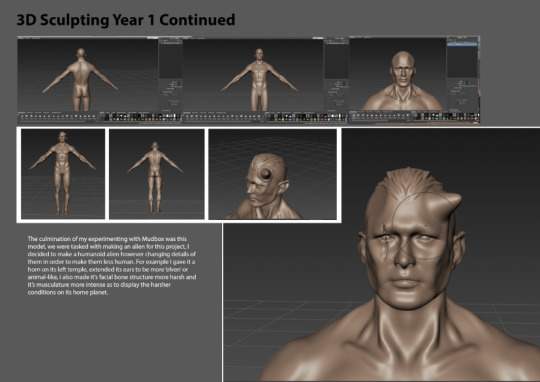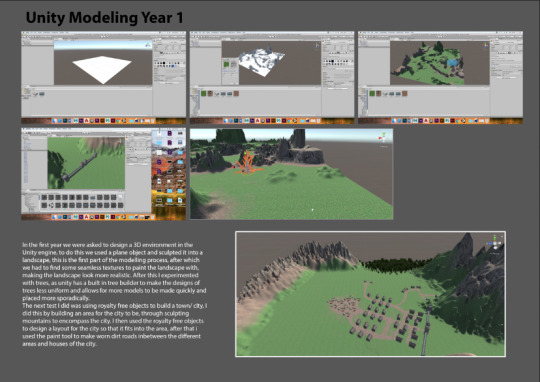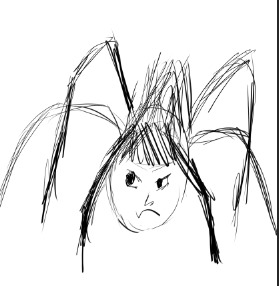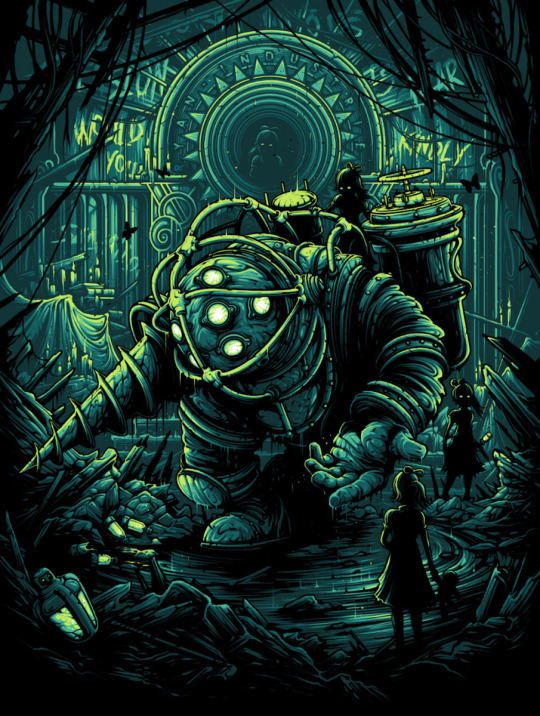Don't wanna be here? Send us removal request.
Text
Colleague’s Pose Practice Video
youtube
she begins the process using shades of grey to build up depth and detail without adding darker lines to outline the parts of the body, she then manipulates the arts of the image to better fit the style and form of the pose.
she then goes through choosing colours that will fit with the reference image as well as suit the pose to then build upon with skin tones and shades, she then uses a contrasting colour to make the drawing stand out on the page.
0 notes
Text
Portfolio Work 6


I made 2 sheets on some of the better looking work I did as technical practice. I made bubble prints using ink and liquid soap i then turned them into the petri dishes you might see on tv.
0 notes
Text
Portfolio Work 5


I made two sheets describing and displaying the final pieces I had made for the FMP last year making sure that the work I did on the final pieces and the work i did to prepare for it were separate.
0 notes
Text
Portfolio Work 4


I made a sheet describing the process of videography, the process of filming, editing and cutting together pieces of video in order to make one cohesive final piece.
I also made a sheet detailing the process of making the first model I made in the course, being able to see how the final piece came together from everything I had done.
0 notes
Text
Portfolio Work 3


I made two sheets detailing the process of my experimentation with Mudbox and the work I made whilst learning how the program works. I ended up not using many of the tools as it was easier and looked better to use the fewer that i knew exactly how to use.
0 notes
Text
Portfolio Work 2



I then made 3 sheets about the model making we did in the first year of the course, making three detailed sheets about the processes of how I made the model and the drawing I did after the fact.
0 notes
Text
Portfolio Work 1


Because of my impending interviews at Doncaster and Leeds Universities, I took the time in this project to build my portfolio, using screenshots and images from my first year in the college to build sheets to display and describe my work.
The first two I made were of my animation project and my unity experience.
0 notes
Text
Work 2



For this one I chose to do the Bakeneko a shape-shifting cat. The Bakeneko is often misconstrued as the Nekomata another cat yokai that has two tails instead of the bakeneko’s one. Alot of the time the Bakeneko is drawn as a larger more goblin looking monster.
2 notes
·
View notes
Text
Work 1



I wanted to design some of the mythical creatures in Japanese mythology, the first of which was Honne-onna, a skeletal woman, they are said to become this way due to being bullied about their appearance in life, and so when they become a “beautiful skeleton” they walk through towns to show off how beautiful they have become.
0 notes
Text
Exorcism
Harae
Harae or harai (祓 or 祓い) is the general term for rituals of purification in Shinto. Harae is one of four essential elements involved in a Shinto ceremony. The purpose is the purification of pollution or sins (tsumi) and uncleanness (kegare). These concepts include bad luck and disease as well as guilt in the English sense.
Harae is often described as purification, but it is also known as an exorcism to be done before worship. Harae often involves symbolic washing with water, or having a Shinto priest shake a large paper shaker called ōnusa or haraegushi over the object of purification. People, places, and objects can all be the object of harae.
Misogi
Misogi (禊) is a Japanese Shinto practice of ritual purification by washing the entire body. Misogi is related to another Shinto purification ritual called Harae – thus both being collectively referred to as Misogiharae (禊祓).
In Kyoto, people douse themselves under Kiyomizu Temple's Otowa no taki waterfall, although the majority of visitors drink from the waters rather than plunging into them. Every year, many groups take pilgrimages to sacred waterfalls, lakes and rivers, either alone or in small groups, to perform misogi. Mount Ontake, the Kii mountain range and Mount Yoshino are but a few examples of ancient and well known areas for Misogi in Japan. In the United States misogi is performed at the Tsubaki Grand Shrine of America at the Konryu Myojin no Taki waterfall each morning.
1 note
·
View note
Text
Origami
Origami (折り紙 from ori meaning "folding", and kami meaning "paper" (kami changes to gami due to rendaku)) is the art of paper folding, which is often associated with Japanese culture. In modern usage, the word "origami" is used as an inclusive term for all folding practices, regardless of their culture of origin. The goal is to transform a flat square sheet of paper into a finished sculpture through folding and sculpting techniques.
The small number of basic origami folds can be combined in a variety of ways to make intricate designs. The best-known origami model is the Japanese paper crane. In general, these designs begin with a square sheet of paper whose sides may be of different colours, prints, or patterns. Traditional Japanese origami, which has been practised since the Edo period (1603–1867), has often been less strict about these conventions, sometimes cutting the paper or using non-square shapes to start with.
0 notes
Text
Senbazuru
One thousand origami cranes (千羽鶴 literally “1000 cranes”) is a group of one thousand origami paper cranes held together by strings. An ancient Japanese legend promises that anyone who folds a thousand origami cranes will be granted a wish by the gods. Some stories believe you are granted happiness and eternal good luck, instead of just one wish, such as long life or recovery from illness or injury. This makes them popular gifts for special friends and family. The crane in Japan is one of the mystical or holy creatures (others include the dragon and the tortoise) and is said to live for a thousand years: That is why 1000 cranes are made, one for each year. In some stories it is believed that the 1000 cranes must be completed within one year and they must all be made by the person who is to make the wish at the end.
0 notes
Text
Onmyodo/ Onmyoji
Onmyōdō (陰陽道, also In'yōdō, lit. 'The Way of Yin and Yang') is a traditional Japanese esoteric cosmology, a mixture of natural science and occultism. It is based on the Chinese philosophies of Wu Xing (five elements) and yin and yang, introduced into Japan at the beginning of the 6th century. It was accepted as a practical system of divination. These practices were influenced further by Taoism, Buddhism and Shintoism, and evolved into the system of onmyōdō around the late 7th century. Onmyōdō was under the control of the imperial government, and later its courtiers, the Tsuchimikado family, until the middle of the 19th century, at which point it became prohibited as superstition.
Onmyōji were specialists in magic and divination. Their court responsibilities ranged from tasks such as keeping track of the calendar, to mystical duties such as divination and protection of the capital from evil spirits. They could divine auspicious or harmful influences in the earth, and were instrumental in the moving of capitals. It is said that an onmyōji could also summon and control shikigami.
Famous onmyōji include Kamo no Yasunori and Abe no Seimei (921–1005). After Seimei's death, the emperor had a shrine erected at his home in Kyoto.
Onmyōji had political clout during the Heian period, but in later times when the imperial court fell into decline, their state patronage was lost completely. In modern-day Japan onmyōji are defined as a type of priest, and although there are many who claim to be mediums and spiritualists, the onmyōji continues to be a hallmark occult figure.
1 note
·
View note
Text
Monday Short Project



Working in groups of two we were asked to design a mythic creature that combined several of the already existing creatures in Japanese mythology.
My partner and I decided on the 5 listed in the bottom left of the sheet to create our creature. starting with the idea of a decapitated head hanging from a tree, capable of moving with its barb tipped hair, and expanded the idea to include the tree as a being that eats the souls of people, and uses its fruit, which are the heads, to capture and draw the people in. It’s name is “Kumo no atama no kaju” which literally translates to “spider head fruit tree”.
0 notes
Text
Bubble Prints

We started experimenting with bubble printing, blowing bubbles into an ink and soap mixture, at the start of it I found I wasn’t blowing enough bubbles into the cup making it so that the prints were lacking detail.

I then took it a bit too far blowing too many, defining the outsides of the prints and limiting the amount of bubbles seen in the print.



After experimenting for a while I made what i think is the best of the prints, i then decided to use these prints in my previous project as they generally look a lot like the petri dish videos used in media.
0 notes
Text
Devil May Cry

Devil may Cry (デビル メイ クライ) is an action-adventure hack and slash game series developed and published by Capcom, the story follows the main character Dante as he strives to avenge his mother’s murder by exterminating demons. The majority of the game is made up of heavy skill based combat, in which the player must build combo’s of attacks whilst evading damage from enemies in order to use more powerful attacks. The series has links to the Italian poem ‘Divine Comedy’ through the naming of its characters mainly: Dante (Dante Alighieri), Vergil (Vergil), Trish (Beatrice Portinari), Lucia (Saint Lucy). It also has links to the tales of the Seven Deadly Sins with many of the enemies being named after them such as: Hell Pride or Hell Lust.
The series has been a big success with the main entries selling multiple millions of copies and being awarded the ‘platinum title’ by Capcom. The series’ success has been so large that there have been comic books, novelisations and animated series of is stories and background not shown in the games.
youtube
0 notes
Text
LCH Talks
Dan Mumford:



Dan Mumford is an English screen printer working both physically and digitally on pieces for film and games. He spent many years designing CD covers for heavy metal bands and whilst he loves the music and enjoyed his time doing the jobs, he got tired of the repetition in his work and moved toward designs for film and gaming.
While working on his electronic prints he tends to work in reverse to how you would do it traditionally, going from dark to light rather than light to dark.
His work tends to be quite liquid, preferring curved lines to sharp corners and jagged lines. I quite like this style it looks less cartoon-y and brings a strange depth to the images.
Luke Adam Hawker:



Luke Adam Hawker is an English artist who specialises in drawing on location, he will spend hours working on pieces of art whilst standing looking at the location rather than using reference images.
Coming from a background of architectural and interior design, He uses his skills of perspective drawing to recreate his surroundings in as high a detail as he possibly can even including quick sketches of the people passing around him.
I like the realism that he puts into his works, this allows the viewer to get a more accurate idea of the atmosphere and scale of the places he draws.
0 notes